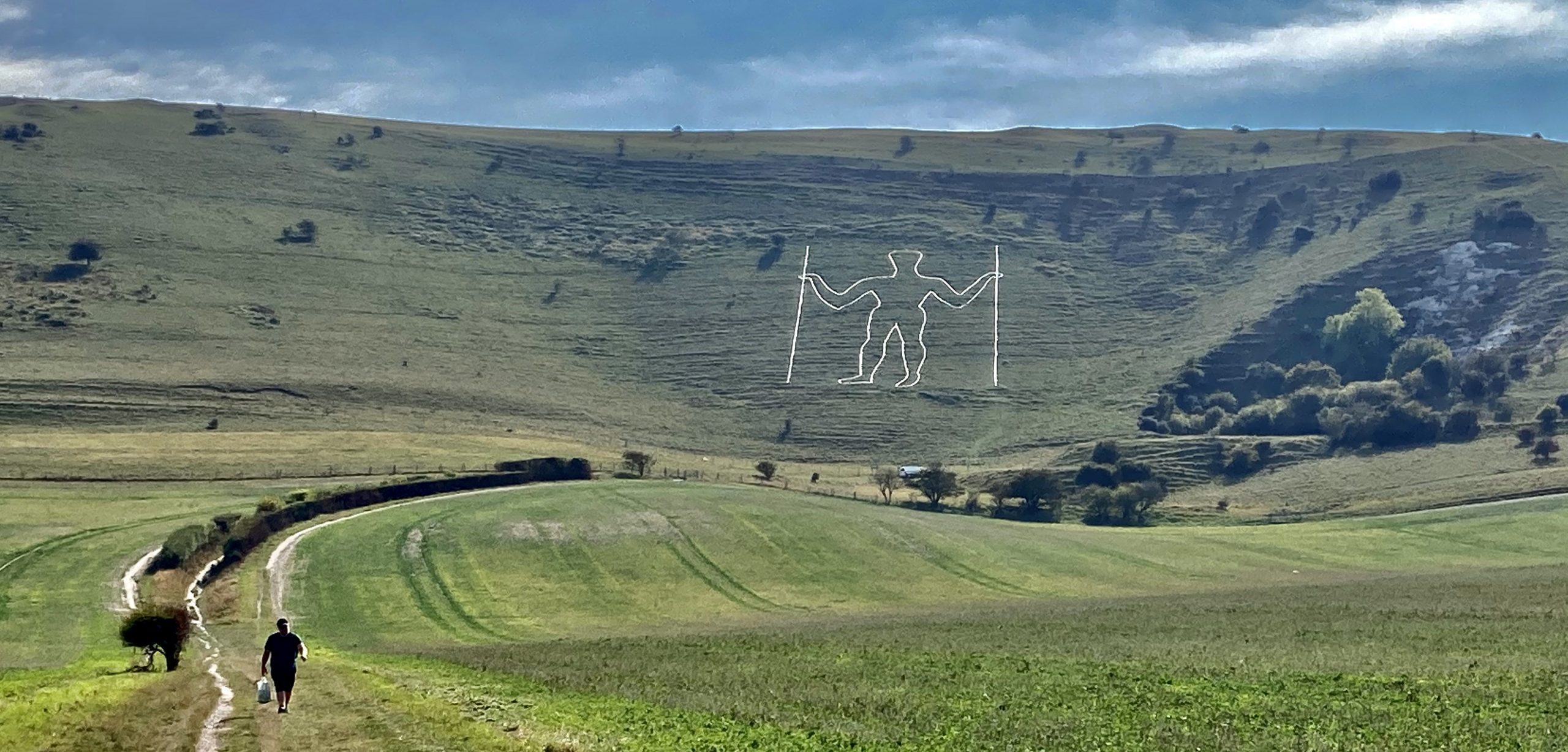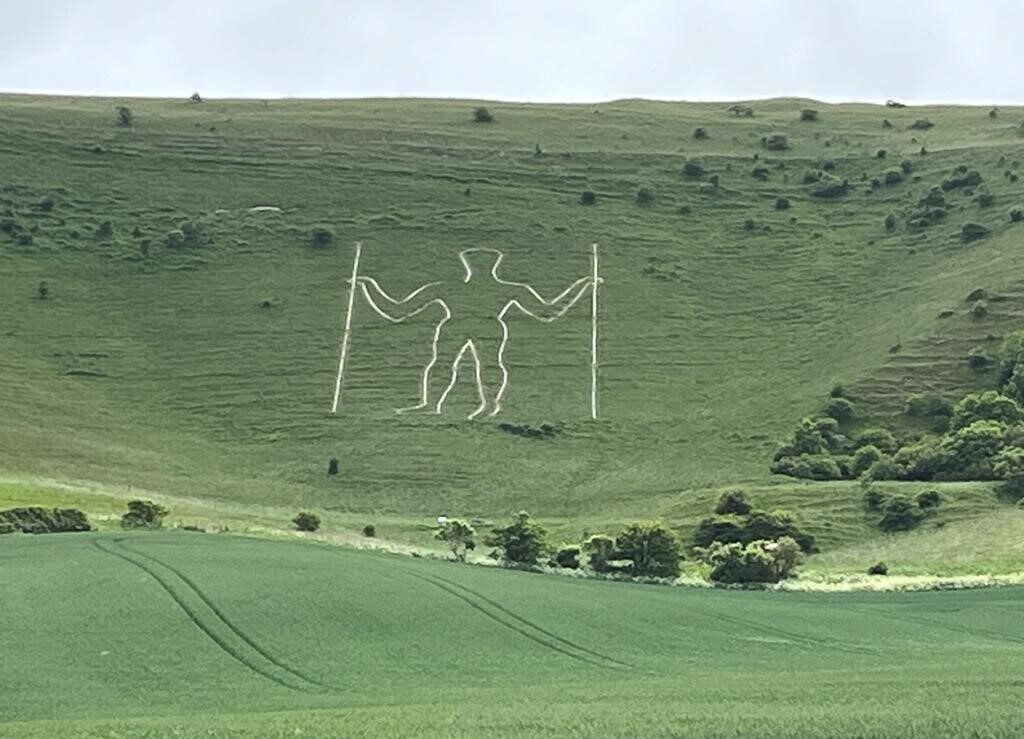
The Long Man of Wilmington
Free to Explore
This mysterious guardian of the South Downs has baffled archaeologists and historians for hundreds of years. Fertility symbol? Ancient Warrior? Early 18th Century folly? We may never know.
In 1925, this iconic monument was given to The Sussex Archaeological Society by the Duke of Devonshire. We have cared for the scheduled monument ever since, ensuring it is free for the public to access.

Getting here – public transport
Buses serve the A27, and British Rail stations served direct from Eastbourne, Lewes, Hastings and London are at Berwick (3 miles) and Polegate (2.5 miles). Please check local timetables for details.
For further help with public transport visit the Traveline website.
Getting here – by car or coach
Six miles north-west of Eastbourne (OS 199 TQ543034). It is signposted from the A27, two miles west of the junction with the A22 at Polegate and 10 miles east of Lewes and located south of the village of Wilmington.
Parking: There is a public car park (with height limitation) just south of Wilmington Priory (not open to the public) with excellent views available within a few yards’ walk.
Access
The Long Man may be reached by public footpaths to the base and the top of the figure and interpretation boards are located at the car park and at the bottom of the hill showing details of these. The rights of way to the base of the figure are reasonably easy for walkers but are probably not suitable for wheelchairs.
Address: South Downs Way, Wilmington, Eastbourne BN26 5SW
Phone: 01273 405735
The Long Man is Europe’s largest portrayal of the human form, dating back to at least 1710 when the surveyor John Rowley illustrated the figure. In 1766, the artist William Burrell made a drawing during his visit to Wilmington Priory, which lies under the steep slopes of Windover Hill.
Rowley’s drawing suggests that the original figure was a shadow or indentation in the grass rather than a solid line. The face had a distinctive helmet shape, giving credence to the idea him being a war-god.
Until the 19th century when it was marked out in yellow bricks, the Long Man was only visible in certain light conditions. It is claimed that during this restoration the feet were incorrectly positioned. But, despite local legend, there is no evidence, historical or archaeological, to suggest that prudish Victorians robbed the Giant of his manhood!
During World War II, the figure was painted green to prevent enemy aviators using it as a landmark. Restoration in 1969 replaced the bricks with concrete blocks that are now regularly painted to keep the Long Man visible from many miles away.
Many theories of his origins abound. Some are convinced that he is prehistoric, others believe that he is the work of an artistic monk from the nearby Priory between the 11th and 15th centuries. Roman coins bearing a similar figure suggest that he existed in the 4th century AD and there are parallels with a helmeted figure found on Anglo-Saxon ornaments. Until new evidence is unearthed, we shall have to content ourselves with the words of Reverand A A Evans who said, “The Giant keeps his secret and from his hillside flings out a perpetual challenge.”

